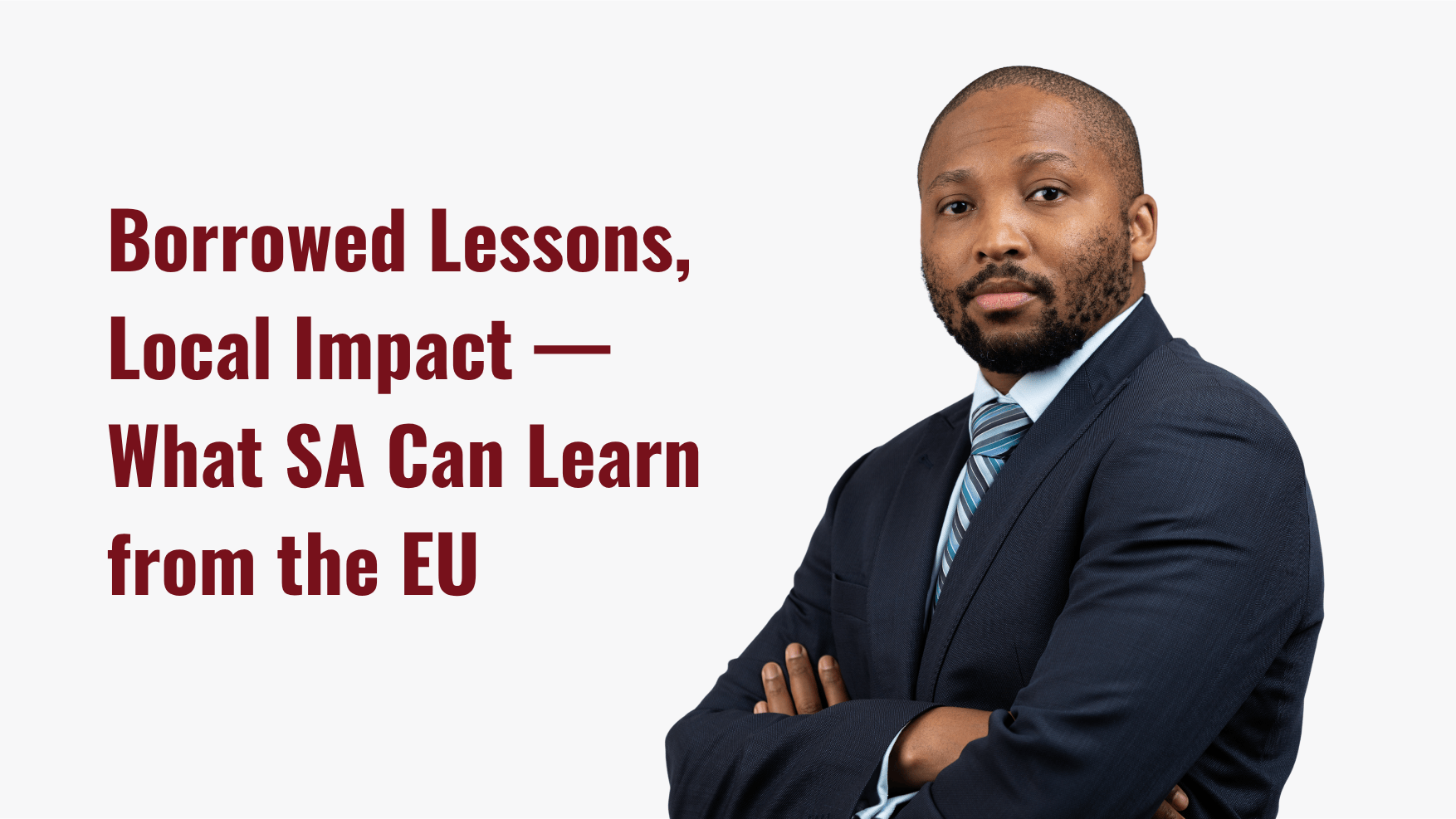
As Europetakes a hard look in the mirror, South Africa has a unique opportunity to learnfrom its missteps before making our own. The question isn’t whether we know where the future is headed — but whether we’ll act boldly enough to claim our place in it.
Mid-year always brings that familiar bite of winter — along with the annual chorus of South Africans acting like it’s their first time feeling cold. In my household,the chill is accompanied by something even less welcome: exam season. Like most kids, mine aren’t exactly thrilled by the pressure, and if there’s anything worse than writing the exams, it’s facing the aftermath in the form of the dreaded school report. I constantly remind them (usually received with much eye-rolling) that the real value lies in learning from their mistakes — especially the ones they’ve already made throughout the year.
That mantra got me thinking about something else I’ve been turning over in my mind: the European Union’s recent self-examination, led by Mario Draghi’s review of the bloc’s global competitiveness. Their honest reckoning and the roadmap thatfollowed sparked a question — what might South Africa learn from Europe’s growing pains before we’re forced to confront our own?
In A Competitiveness Compass for the EU,the European Commission lays out a clear-eyed roadmap for strengthening the bloc’s global position. It’s an honest assessment — and an ambitious agenda — focused on turning structural weaknesses into long-term strengths. The key imperatives include:
· Closing the innovation gap to drive future growth
· A joint roadmap for decarbonisation and competitiveness that links decarbonisation with competitiveness
· Reducing excessive dependencies and increasing security while boosting economic and strategic security
· Simplifying regulations to cutred tape and promote speed, agility, and flexibility
· Unlocking the full potential of the Single Market by removing internal barriers
· Channelling household savings into productive investment via a Savings and Investment Union and a refocused EU budget
· Promoting skills and quality jobs,while ensuring social fairness and inclusion
· Improving coordination between EU-wide and national policies to align strategy and execution
The areas identified in the report aren’t just lofty aspirations — they’re an honest admission of where the EU is falling short, paired with a plan to turn those shortcomings into strengths. But what’s equally striking is the emphasis on untapped potential. One standout example is the underuse of household savings. Despite Europeans saving far more than their American counterparts — 65% more in 2022, to be precise — those funds aren't being channelled effectively into productive, innovative investments.
The contrast with the US is stark. Thanks to the depth and intentional design of American capital markets, savings there are more easily directed toward high-impact innovation. The result? The EU accounts for just 5% of global venture capital funds raised, while the US and China command a massive 52% and 40%, respectively. It’s a sobering snapshot of a region with plenty of capital — but asystem that struggles to deploy it where it counts. Still, these insights aren’t just warnings — they’re valuable lessons for others, including South Africa.
Looking locally, and drawing on the value of learning from others, the challenge is nolonger about knowing where the opportunities lie. In technology alone, it’s widely accepted that the future will be shaped by fields like artificial intelligence, quantum computing, advanced materials, clean energy, robotics, space technologies, and autonomous mobility. The real question is how our economy can actively participate in — and ultimately rise with — these emerging sectors.
We share a challenge with the EU when it comes to the inefficient allocation of capital into innovation-driven areas. Yet, South Africa benefits from a relatively sophisticated financial system by global standards and substantial savings pooled by institutions such as pension funds. The call to action is clear: capital owners must urgently redirect focus toward innovation as a key investment priority. Ignoring this path could have serious implications for the country’s future. Fortunately, we possess a unique advantage — the vast and untapped potential of the African continent itself, offering opportunities that extend well beyond our borders.
Skill development is another critical enabler identified by the EU Commission, and here too technology offers a leapfrogging chance. By harnessing cutting-edge educational and connectivity tools, South Africa can bypass traditional learning hurdles and better compete on the global stage. The EU Commission also recognises that some industries carry cost disadvantages too large for the EU to manage alone. These very sectors present openings for South Africa and the wider continent to forge strategic partnerships with Europe — turning challenges into collaborative opportunities for growth.
The adage remains true: you don’t have to make a mistake to learn from it. Watching a global power like the EU engage in honest self-reflection and map out clear, practical solutions is both instructive and inspiring. While the bloc faces many other hurdles — demographic shifts, immigration issues, productivity slowdowns — the hope is that following this thoughtful roadmap will help them tackle these challenges as well.
South Africa, too, must identify a handful of critical steps on its own journey to prosperity, even amid a landscape crowded with urgent problems. My kids might roll their eyes at my well-meaning advice, but I sincerely hope South Africans collectively don’t.





